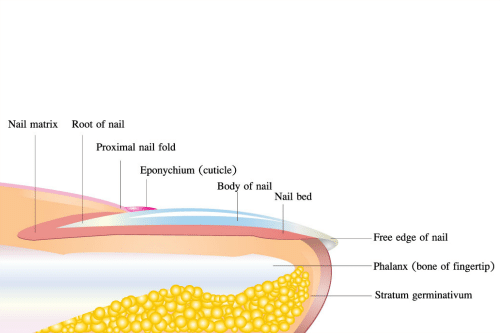You may never look at your toenails the same again after reading this blog! They function way beyond just looking pretty in polish or, for the brave men out there, buffed to a high gloss shine!
A nail is a horn-like “envelope” covering the tips of the fingers and toes in humans, most non-human primates, and a few other mammals. Interestingly enough though, nails are quite similar to claws in other animals.
Toenails are made of a tough protective protein called keratin. This protein is also found in the hooves and horns of different animals.
A basic knowledge of the toenail consists of the following parts:
- The Nail Matrix: Where the nail starts and nail cells multiply and keratinize (harden and form into nail material) before being incorporated into the toenail. Most of the matrix is not visible. The matrix starts under the skin 5 mm below the nail fold (the area of the cuticle where the finger or toe skin meets the nail) and covers the area called the lunula, or half moon (the white half moon-shaped area at the bottom of the nail).
- The Cuticle: A fold of modified skin where the toe meets the nail. The cuticle protects the matrix from infection.
- The Nail Plate: The actual nail itself.
- The Nail Bed: The soft tissue underneath the nail, anchoring the nail plate. The nail plate protects the nail bed.
